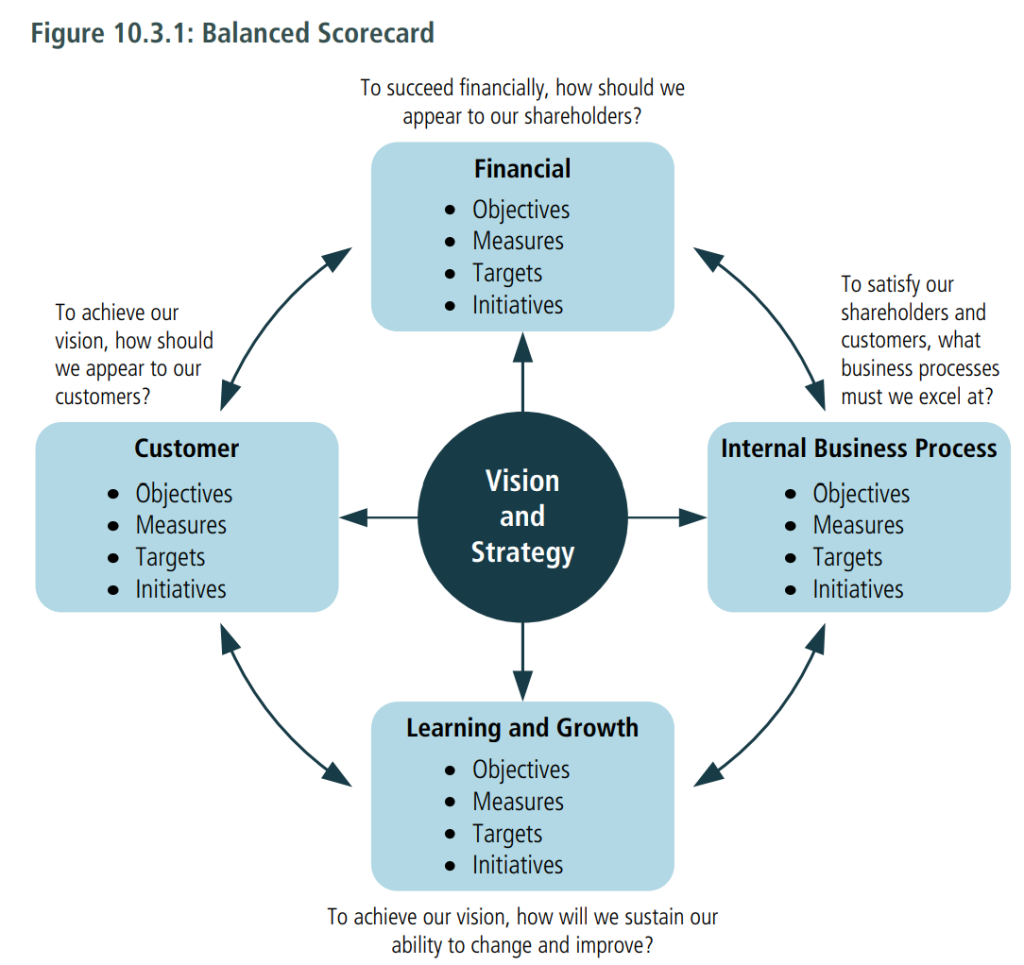10.3.1 Purpose
The balanced scorecard is used to manage performance in any business model, organizational structure, or business process.
10.3.2 Description
The balanced scorecard is a strategic planning and management tool used to measure organizational performance beyond the traditional financial measures. It is outcome focused and provides a balanced view of an enterprise by implementing the strategic plan as an active framework of objectives and performance measures. The underlying premise of the balanced scorecard is that the drivers of value creation are understood, measured, and optimized in order to create sustainable performance.
The balanced scorecard is composed of four dimensions:
- Learning and Growth,
- Business Process,
- Customer, and
- Financial.
The balanced scorecard includes tangible objectives, specific measures, and targeted outcomes derived from an organization’s vision and strategy. Balanced business scorecards can be used at multiple levels within an organization. This includes at an enterprise-wide level (macro level), departmental or function level,
and even at the level of a project or initiative.

10.3.3 Elements
.1 Learning and Growth Dimension
The Learning and Growth dimension includes measures regarding employee training and learning, product and service innovation, and corporate culture.
Metrics guide the use of training funds, mentoring, knowledge sharing, and technology improvements.
.2 Business Process Dimension
The Business Process dimension includes metrics that indicate how well the enterprise is operating and if their products meet customer needs.
.3 Customer Dimension
The Customer dimension includes metrics on customer focus, satisfaction and delivery of value. These metrics capture how well customer needs are met, how satisfied they are with products and services, whether the delivery of those products and services meet their quality expectations, and their overall experience with the enterprise.
.4 Financial Dimension
The Financial dimension identifies what is financially necessary to realize the strategy. Examples of financial measures indicate profitability, revenue growth, and added economic value.
.5 Measures or Indicators
There are two basic types of measures or indicators: lagging indicators that provide results of actions already taken and leading indicators that provide information about future performance.
Objectives tend to have lagging indicators, but using related leading indicators can provide more real-time performance information.
10.3.4 Usage Considerations
In order for measures to be meaningful they should be quantitative, linked to strategy, and easily understood by all stakeholders. When defining measures, business analysts consider other relevant measures that are in place and ensure that any new or changed measures do not adversely impact any existing ones. At any time, any dimension of the balanced scorecard may be active, changing, and evolving. Each dimension affects and is affected by the others. The balanced scorecard allows the organization to establish monitoring and measuring of progress against objectives and to adapt strategy as needed.
Because scorecards are used to assess the performance of the enterprise or a business unit within the enterprise, changes to the measures can have wide reaching implications and must be clearly communicated and carefully managed.
.1 Strengths
- Facilitates holistic and balanced planning and thinking.
- Short-, medium-, and long-term goals can be harmonized into programs with incremental success measures.
- Strategic, tactical, and operational teams are more easily aligned in their work.
- Encourages forward thinking and competitiveness.
.2 Limitations
- A lack of a clear strategy makes aligning the dimensions difficult.
- Can be seen as the single tool for strategic planning rather than just one tool to be used in a suite of strategic planning tools.
- Can be misinterpreted as a replacement for strategic planning, execution, and measurement.
